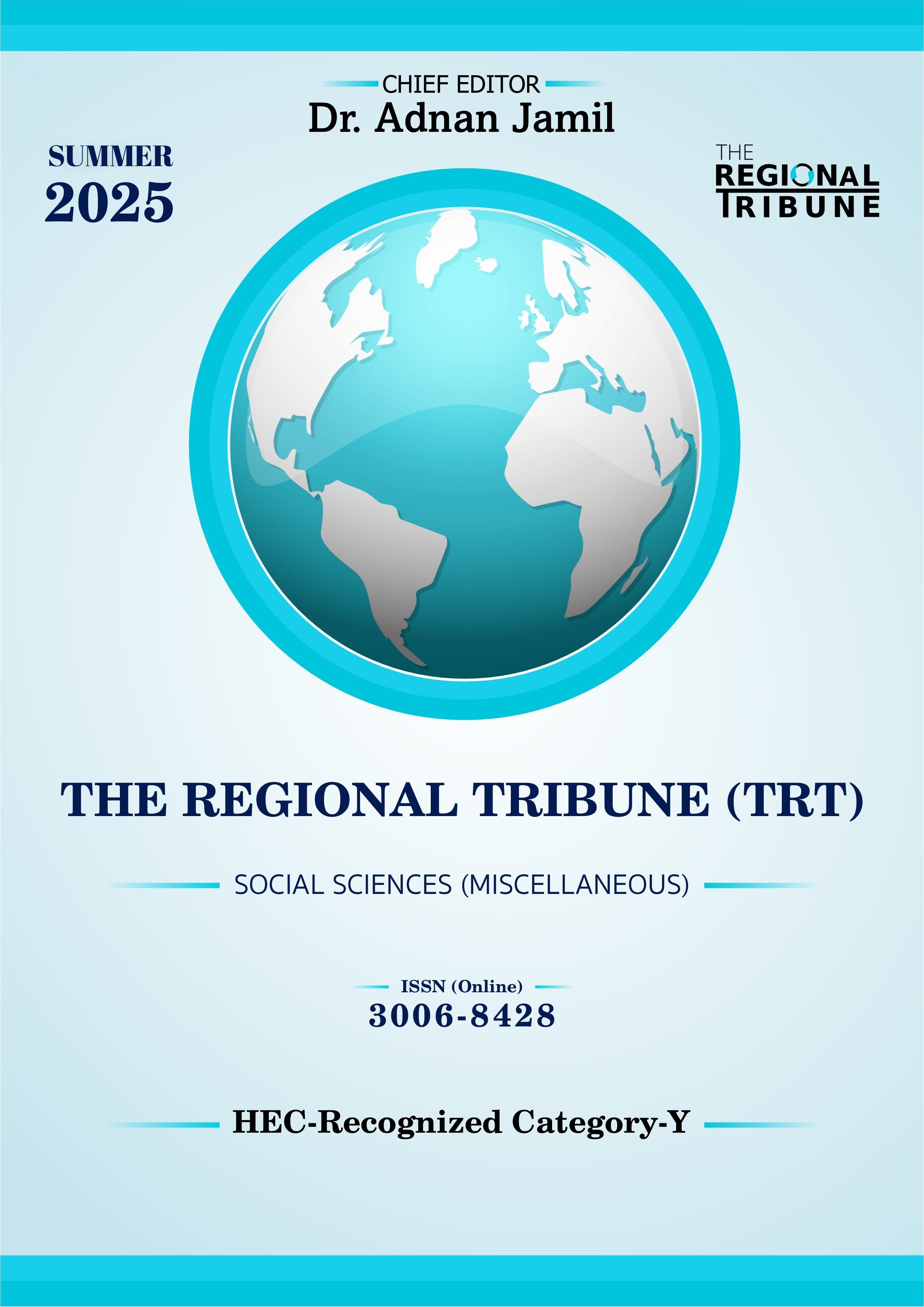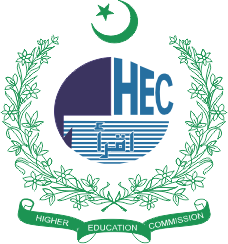Rising Waters, Shifting Risks: A Comparative Hydro-meteorological Analysis of the 2010 and 2022 Floods in the Kabul River Basin
DOI:
https://doi.org/10.55737/trt/SR25.117Keywords:
Hydro-meteorological Analysis, Kabul River Basin, Monsoon Floods, River Discharge, Climate Variability, GIS Mapping, Flood Risk , ManagementAbstract
The Kabul River Basin, which covers eastern Afghanistan as well as the northwestern corner of Pakistan, has witnessed two of the most disastrous flood incidents in 2010 and 2022. This paper offers a comparative hydro-meteorological analysis of these floods with emphasis on rainfall intensity, runoff surface, river discharge, and the spatial scale of floods. The research presents significant changes in the behavior of floods in both events using secondary datasets of NASA MERRA-2, PMD, GlobeLand30, and the Khyber Pakhtunkhwa WAPDA Department, GIS mapping, and hydrological modeling. The total amount of monsoonal rainfall in 2010 was 606 mm, and in 2022 it significantly grew to 826 mm, which shows the influence of the changes in rainfall and land use due to the expansion of urban areas. Though in 2010 the peak discharge was higher (135,075 cusecs vs. 127,384 in 2022), what made 2022 evident is higher average flows and a longer period of high discharge. The results credit this increase in flood hazards in relation to climatic fluctuations, glaciers, and decreasing infiltrations under man-made stresses. They suggest strengthened early warning systems, land-use policies; transboundary watershed management, and adaptive planning of infrastructure would strengthen resilience and could be used to reduce the effects of future floods in vulnerable South Asian river basins.
References
Ahmed, S. F., Mofijur, M., Parisa, T. A., Islam, N., Kusumo, F., Inayat, A., Le, V. G., Badruddin, I. A., Khan, T. Y., & Ong, H. C. (2022). Progress and challenges of contaminant removal from wastewater using microalgae biomass. Chemosphere, 286, 131656. https://doi.org/10.1016/j.chemosphere.2021.131656
Balloch, C. M. (2018). Inflows and spillovers: Tracing the impact of bond market liberalization. Unpublished working paper. Columbia University.
Hashmi, H. N., Siddiqui, Q. T. M., Ghumman, A. R., Kamal, M. A., & Mughal, H. U. R. (2012). A critical analysis of the 2010 floods in Pakistan. African Journal of Agricultural Research, 7(7), 1054-1067. https://doi.org/10.5897/ajarx11.036
Martius, O., Sodemann, H., Joos, H., Pfahl, S., Winschall, A., Croci‐Maspoli, M., Graf, M., Madonna, E., Mueller, B., Schemm, S., Sedláček, J., Sprenger, M., & Wernli, H. (2012). The role of upper‐level dynamics and surface processes for the Pakistan flood of July 2010. Quarterly Journal of the Royal Meteorological Society, 139(676), 1780-1797. https://doi.org/10.1002/qj.2082
Mehmood, T. (2021). Does information technology competencies and fleet management practices lead to effective service delivery? Empirical evidence from- Commerce industry. International Journal of Technology, Innovation and Management (IJTIM), 1(2), 14-41. https://doi.org/10.54489/ijtim.v1i2.26
Memon, S. A., Arsalan, R., Khan, S., & Lo, T. Y. (2012). Utilization of Pakistani bentonite as partial replacement of cement in concrete. Construction and Building Materials, 30, 237-242. https://doi.org/10.1016/j.conbuildmat.2011.11.021
Nanditha, J. S., Kushwaha, A. P., Singh, R., Malik, I., Solanki, H., Chuphal, D. S., Dangar, S., Mahto, S. S., Vegad, U., & Mishra, V. (2023). The Pakistan flood of August 2022: Causes and implications. Earth's Future, 11(3). https://doi.org/10.1029/2022ef003230
Otto, F. E. (2023). Attribution of extreme events to climate change. Annual Review of Environment and Resources, 48(1), 813-828. https://doi.org/10.1146/annurev-environ-112621-083538
Raulfs-Wang, C. (2017). A river runs through it: Scientific border tales from Afghanistan and Pakistan. https://doi.org/10.29171/azu_acku_pamphlet_gb1359_a3_p678_2012
Shahid, M., Javed, H. M., Ahmad, M. I., Qureshi, A. A., Khan, M. I., Alnuwaiser, M. A., Ahmed, A., Khan, M. A., Tag-ElDin, E. S., Shahid, A., & Rafique, A. (2022). A brief assessment on recent developments in efficient Electrocatalytic nitrogen reduction with 2D non-metallic nanomaterials. Nanomaterials, 12(19), 3413. https://doi.org/10.3390/nano12193413
UNISDR, U. (2015, March). Sendai framework for disaster risk reduction 2015–2030. In Proceedings of the 3rd United Nations World Conference on DRR, Sendai, Japan (Vol. 1). https://www.undrr.org/publication/sendai-framework-disaster-risk-reduction-2015-2030
Waseem, H. B., & Rana, I. A. (2023). Floods in Pakistan: A state-of-the-art review. Natural Hazards Research, 3(3), 359-373. https://doi.org/10.1016/j.nhres.2023.06.005
Downloads
Published
Issue
Section
License
Copyright (c) 2025 Faheem Ullah, Muazam Saleem Khattak, Muhammad Hasnain khan, Imad hussain, Sheraz Ahmed

This work is licensed under a Creative Commons Attribution-NonCommercial 4.0 International License.



